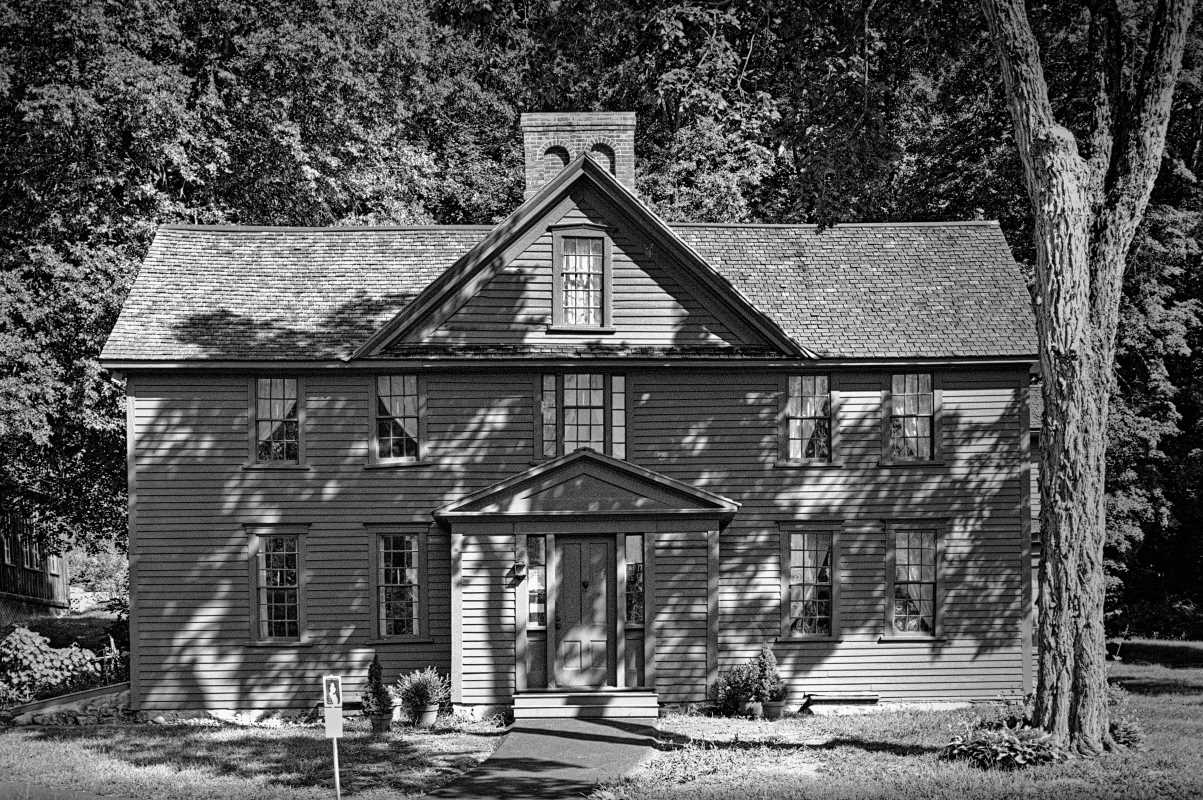Nestled in the charming town of Concord, Massachusetts, Orchard House is a treasure trove of literary history and an essential destination for fans of Louisa May Alcott and her beloved novel, Little Women. This historic home, where Alcott lived with her family and wrote the timeless tale of the March sisters, offers a glimpse into the life and times of the author and her creative household. A visit to Orchard House allows travelers to step back in time, experiencing the inspiration behind the characters, themes, and events that have captured readers’ hearts for generations. With its beautifully preserved rooms, fascinating artifacts, and connections to Alcott’s world, Orchard House is a must-see for literature lovers and history enthusiasts alike.
The History of Orchard House
Orchard House, built in the early 18th century, became home to the Alcott family in 1858. The Alcotts were a unique and intellectually driven family, led by Bronson Alcott, a transcendentalist philosopher and educator, and Abigail May Alcott, a dedicated social reformer. Louisa May Alcott shared this creative spirit and began her writing career at a young age.
Louisa penned Little Women in 1868 in the modest yet cozy surroundings of Orchard House. The novel, which follows the lives of the four March sisters—Meg, Jo, Beth, and Amy—is largely autobiographical and reflects the personalities, relationships, and struggles of the Alcott family. Today, Orchard House remains remarkably well-preserved, with approximately 80% of its furnishings and artifacts original to the Alcott family.
Step Inside the World of the Alcotts
A tour of Orchard House is a journey into the heart of Louisa May Alcott’s world. Visitors can explore the rooms where the Alcotts lived, worked, and created. Highlights include:
- Louisa’s Writing Desk: Perhaps the most iconic artifact in the house, this simple wooden desk is where Louisa wrote Little Women. Positioned by a window, the desk overlooks the garden, offering insight into the tranquil setting that inspired her creative process.
- The Parlor: The family’s gathering place features musical instruments, artwork, and furnishings that reflect their love of the arts and culture. Here, the Alcotts often hosted guests, including notable figures like Ralph Waldo Emerson and Henry David Thoreau.
- May Alcott’s Artwork: Louisa’s youngest sister, May, was an accomplished artist, and her work is displayed throughout the house. Her talent and creativity shine in every corner, from decorative paintings on the walls to intricate sketches.
- The Dining Room: The setting for many lively family discussions, the dining room reflects the Alcotts’ commitment to education, philosophy, and reform.
The house’s authentic preservation allows visitors to feel as though they’ve stepped directly into the pages of Little Women.
The Connections Between Little Women and Orchard House
Orchard House serves as the real-life counterpart to the fictional March family home. Many aspects of the Alcotts’ lives are mirrored in Little Women:
- Jo March and Louisa May Alcott: The headstrong, independent Jo is a semi-autobiographical representation of Louisa herself, reflecting her ambition to become a successful writer in a male-dominated world.
- The Sisters’ Talents: Just as Jo wrote, Beth played the piano, Meg embraced domestic life, and Amy pursued art, the Alcott sisters had parallel passions in real life.
- Financial Struggles: The March family’s financial difficulties echo the Alcotts’ own challenges, highlighting themes of resilience and sacrifice.
Walking through Orchard House, fans can envision scenes from the novel coming to life—the sisters reading by the fire, Jo scribbling furiously at her desk, or Beth quietly playing the piano.
The Educational and Inspirational Mission of Orchard House
Beyond its historical significance, Orchard House is dedicated to preserving Louisa May Alcott’s legacy and inspiring future generations. The site offers a range of educational programs, workshops, and events, including:
- Living History Tours: Costumed guides bring the Alcott family to life, sharing stories and insights into their daily routines and ideals.
- Writing Workshops: Aspiring writers can find inspiration in the same spaces where Louisa crafted her novels.
- Little Women Weekends: Special events celebrate Little Women's enduring appeal, featuring lectures, reenactments, and themed activities.
Orchard House also focuses on promoting values central to the Alcott family, such as social justice, education, and creativity.
Exploring Concord: A Hub of Literary History
Orchard House is just one part of Concord’s rich literary heritage. Visitors can expand their exploration by visiting other landmarks connected to the transcendentalist movement and iconic American writers, including:
- Walden Pond: Made famous by Henry David Thoreau’s Walden, this serene pond is perfect for a reflective walk or picnic.
- The Old Manse: Formerly home to Ralph Waldo Emerson and Nathaniel Hawthorne, this historic house offers insight into the transcendentalist community.
- Sleepy Hollow Cemetery: Known as “Author’s Ridge,” this cemetery is the final resting place of Louisa May Alcott, Emerson, Thoreau, and Hawthorne.
Concord’s blend of natural beauty and intellectual history makes it an ideal destination for literature enthusiasts.
Why Orchard House Matters Today
Orchard House remains a powerful testament to the enduring impact of Louisa May Alcott’s life and work. The themes of Little Women—family, perseverance, and the pursuit of dreams—continue to resonate with readers around the world.
Visiting Orchard House is more than just a historical experience; it’s an opportunity to connect with the timeless values and creativity that have inspired countless generations. Whether you’re a lifelong fan of Little Women or discovering it for the first time, Orchard House offers a unique and moving journey into the heart of one of America’s most cherished literary legacies.







